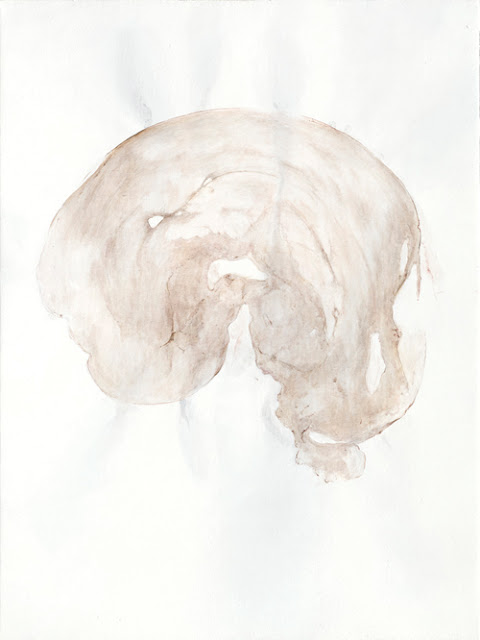The Chinese Shock Artist That Inspired Rumors of Baby-Eating: Zhu Yu [Extreme Content Warning]
China is self-contained. While VPNs have bred accessibility to the internet from within the country, the culture is still largely self-referential in a place that has made it difficult to rely on or relate to a lot of outside information. While most of the world, no matter the language, uses the same handful of websites and can recognize their humor, I don't think the same can often be said about China who boasts its very own common websites all to itself.
The same can be said of cuisine. In my time in Beijing I've eaten my fair share of fruits and veg I'd never seen in the west, endangered species, and unique meats, though I never saw any of the things I'd heard and seen on the internet in my youth. There were these mass e-mails sent that said they torture cats and donkeys in China because the taste is sweeter. The famous shock film "Faces of Death" (banned in 46 countries!) was commonly cited as a display of how the Chinese would eat live animals, depicting a (fake) scene of brains being scooped from a live monkey's skull despite the film's scene not being set in China. Rumors of the taste of torture were never realized, at least not in my presence in my short time there. Those same stories swirled the internet when I was a child about how people in China ate human fetuses and infants. These rumors were often accompanied by shocking photographs.
These photographs were the work of Zhu Yu, "Eating Humans" in an exhibition called "Fuck Off" by the famed Ai Wei Wei, whose work and activism grant him worthy of an article all his own. This exhibition was done in the year 2001, and they took this entry down the night before opening for fear of government interference. Despite never being open to the public, the photos gained massive attention.
Circulated in the early 2000s with no caption and eventually the sick rumors of a uniquely alien and vilified country to most of the western world, Zhu Yu's work became commonplace on the shock and gore websites that defined the era. Framed instead as a shock art piece, I can only wonder if the sentiment would be the same. Would people be as quick to dismiss the disparate art that escapes the government's fist?
These shock images became so famous that it's difficult to look further into Zhu Yu's work, which explores visceral ideas within the frame of death, so much so that he's been deemed a member of the "cadaver club" of China that includes artists who frequently use cadavers and dead animals in their work.
So, was the picture "real"?
Due to the arbitrary enforcement of laws in China and rumors that the fetus was stolen from a medical school, one could argue so. In his 2003 film based on the event, "Corpse Case," Zhu Yu is credited as having said that it was a real abortion and that he ate it and vomited profusely it was so disgusting. He said the same in an interview in "Beijing Swings," a controversial ZCZ documentary from 2003. This film included a disclaimer that reads the artist had come out that the whole act was fake.
We may never know for certain that this fetus is real, and perhaps the intentional ambiguity is for the best. Real or fake, the pictures speak for themselves.
"Eating Humans" is such an overwhelming legend that it obscures some of Zhu Yu's other works of the time. "Pocket Theology" (1999) is an exhibit that houses a single decaying human arm in the center of the ceiling of an otherwise featureless room. The arm holds a thick rope that lies in loops and knots over the surface of the entire floor which the visitor must navigate to get through to the other side and exit the room. This piece opened the door for the famed "cadaver club."
Yu says the stepping onto rope represents connecting with the dead. Some may step over it or cautiously tread through it. The ominous and grotesque arm looming above until one is able to get past is the very thing hindering one's progress.
Other cadaver pieces such as slices of human brain and the aforementioned "Pocket Theology" have no such claims of being fake that "Eating Humans" does, nor the taboo of cannibalism attached to them.
While it's easy to misinterpret works like this, they are important, worthy, and need to be protected as a piece of the importance of rare escape of Chinese expression, as shocking as these particular images are. Some of the most visceral and intense art comes from China, crying to escape past its government in the few places it exists at all. Yu's own description of his works relies on working between the law and human morality, embracing rather than fearing death, and the nature of both humans and god.
That said, all art should have the freedom to be interpreted and embraced without explanation.
After the government crackdown prior to the 2008 Olympics, Yu's art was halted alongside many of his peers. Since 2008 he's created subdued hyperrealistic paintings of ink stains and pebbles, which are effective in their own right as pieces that suggest the same concepts despite being far removed from the visceral roots of his work that reminds us of our own mortality.









Comments
Post a Comment
We are all human. Extend compassion to make life a little easier for everyone involved.